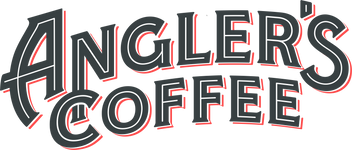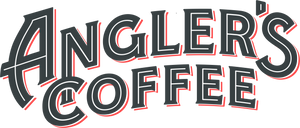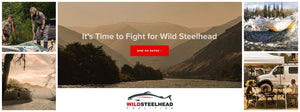Conservation Alliance Partner - Wild Steelhead Coalition
“As Anglers, We Have to Be Conservationists”
Our next Conservation Alliance Partner, the Wild Steelhead Coalition, challenges us to be heroes on the water. You can’t think about the steelhead’s lifecycle and not be moved to want to help preserve their environment. Born in rivers, coastal and inland, throughout the Northwest, in their lifetimes these fish can make multiple multiyear trips to and around the northern Pacific Rim, some swimming from the Pacific Northwest to as far away as Japan before they return to their home waters, often within a few yards of their exact birthplace to give birth, in turn, to the next generation. Each community of wild steelhead is unique to its home waters, so much so that when I spoke with Greg Fitz, the Coalition’s communications manager, he wouldn’t name his favorite fishing spot; “Wherever I get to fish, I’m really just trying to soak up the uniqueness of that watershed.”

Now imagine one of those fish returning from its ocean travels to find a destroyed watershed compromising its path, a newly constructed dam fully blocking its path, or overheating waters transforming its home waters into something strange and unmanageable. The Five Hs, as the Wild Steelhead Coalition calls them—destruction of habitat, hydropower dams, and the increasing heat because of the climate crisis, as well as overharvesting and destructive hatcheries—threaten the wild steelhead at every turn. Of the fifteen distinct steelhead communities in the contiguous states, all are in a concerning, some even endangered, state. Wild steelhead numbers are down everywhere they are found, and we’ve seen unprecedented closures to anglers in recent years, even in those areas not yet formally listed as struggling or threatened under the Endangered Species Act.

“To be a steelhead angler in the twenty-first century, there can’t be any separation between conservation and fishing,” Fitz said. “Off the water, we gotta be speaking up. We gotta be telling our leaders to make the decisions, to drive the policy that will save these fish.” He said that while we can fish responsibly for steelhead in some places, that must entail less time on the water not just to cut down on harvesting but to spend time advocating for the fish and their environment. A day on the river is incredible—often the highlight of my week or month—but what happens when we return home and put our gear away? We can’t just forget about the fish or the health of the rivers until the next time we reach for a fly in the early-morning light.
More than twenty years ago, anglers founded the Wild Steelhead Coalition out of a tackle shop in Washington. They did so in reaction to the closing of spring catch-and-release seasons on North Puget Sound rivers. Never before had returning numbers of wild winter steelhead been so low. Sadly, it would turn out they were ahead of the curve, as entering its third decade, the Coalition has more work to do than ever before.
Still grassroots, largely driven by volunteers, and based entirely in science, the Wild Steelhead Coalition pushes for data-based policy for protection and restoration. They do so with an ever-growing membership of anglers behind them; a big part of their work is educating people who love these rivers to not love them to death—to be responsible, in the way we fish and the way we talk about fishing and restoration with policymakers. Just as science guides their focus, science also proves that this work works. Consider what we’ve observed, with quantifiable data, after the removal of the Elwha River dam: a resurgence of wild summer steelhead there.

Progress is noticeable also in this group as a coalition. “Membership” is informal. “There is no list of organizations,” Fitz told me, “but we take it seriously that we have to be forming partnerships and working together as much as possible.” One of his favorite examples of the type of work the Coalition wants to encourage and be a part of happened recently in South Puget Sound. That project brought together the South Puget Sound Salmon Enhancement Group, the Puyallup Tribe, the Pierce Conservation District, and the Pierce County Surface Water Management to transform a former dairy farm into a restored riparian zone. The Wild Steelhead Coalition has shared the story of this collaborative restoration effort to inspire anglers. They will be joining in the efforts to help financially support some ongoing monitoring of the fish and insect populations and water temperatures, continuing also to educate on how the project benefits the local river system.
As long as they see mostly eye to eye, with the greater good in mind, any group working for the wild steelhead or its environment becomes a part of the Coalition. “Scientists, conversationists, governments, a coffee company that wants to help,” Fitz said with a chuckle.
Angler’s Coffee is grateful for the opportunity. In addition to investing financially in the Wild Steelhead Coalition with every purchase over the next few months, we’ve of course sent some beans their way to help fuel the staff. Fitz told me he always brings a Jetboil to the river. “I think not much beats a cup of coffee on the river at first light during a summer steelhead day or as a pause and a warmup on a winter steelhead day.”
Fitz also recommends people get involved by reading more through the Wild Steelhead Coalition’s Now or Never campaign and signing up for the Coalition’s education and advocacy announcements. They are active on Instagram and Facebook, where they not only share their own news but amplify the work of others. At this writing, their podcast, The Adipose, is only three episodes in, but it’s already sharing inspiring interviews about fish and waters advocacy.

There are so many ways to get involved with the Wild Steelhead Coalition—so please do.
“We have a responsibility to work to protect these fish,” Fitz said, and I couldn’t agree more.


